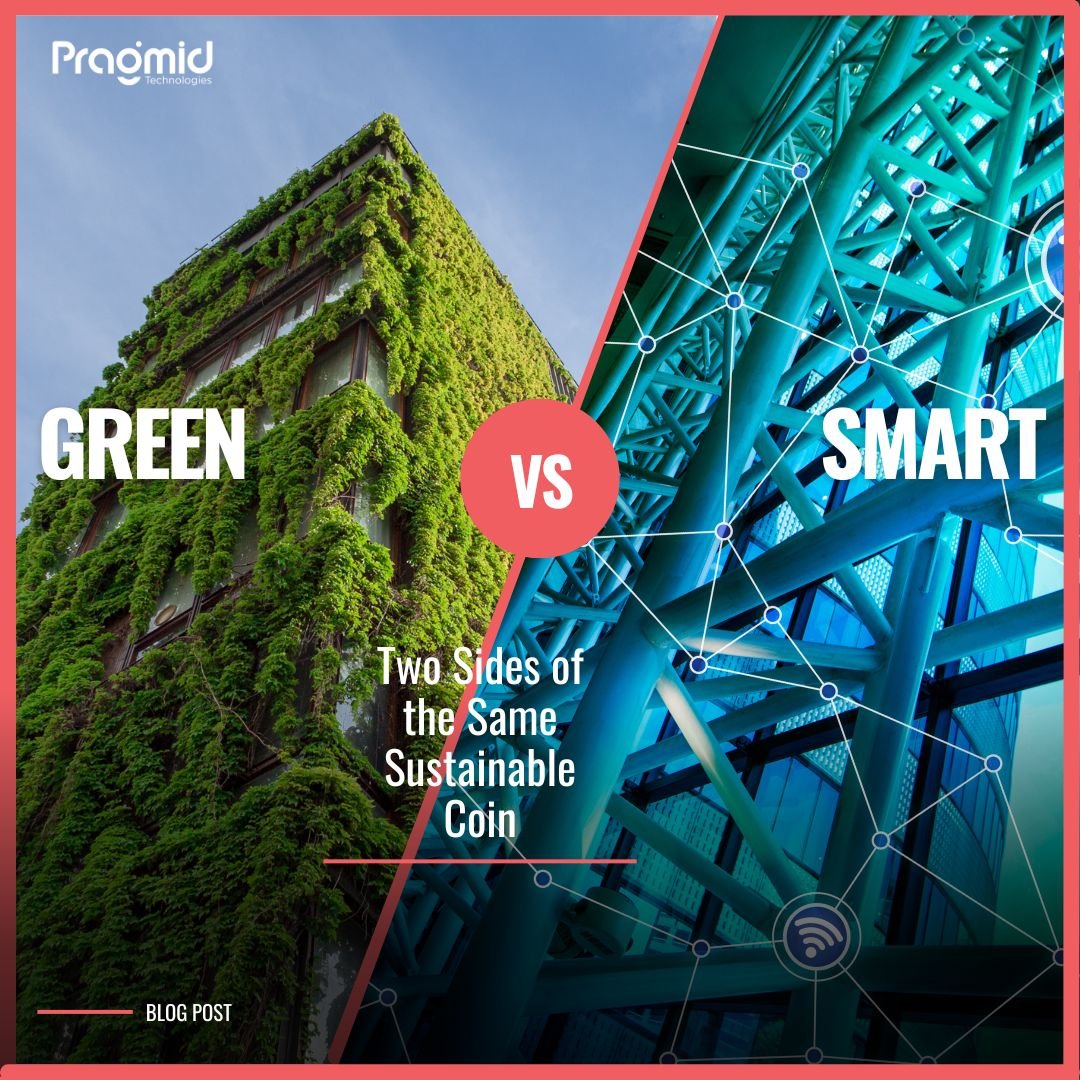
Buildings are a significant contributor to global greenhouse gas emissions, accounting for 40% of energy consumption and 36% of carbon dioxide emissions. With the world facing the threat of climate change, it’s becoming increasingly important to design and construct buildings that are sustainable and energy-efficient. That’s where the concepts of green and smart buildings come in. In this blog post, we’ll explore the differences and similarities between green and smart buildings, and how they work together to create a better building experience.
Green Building: An Eco-Friendly Approach to Design
Green buildings are designed with the environment and human health in mind, minimizing their impact on the planet. This type of building relies on natural elements like rain, sunlight, and wind to control energy and heating, ventilation, lighting, and air conditioning. By using fewer resources and energy, a green building not only helps to reduce its carbon footprint but also creates a healthier environment for its occupants.
A green building is a product of sustainable construction, which addresses the ecological, social, and economic issues of a building within the context of its community. Sustainable construction covers a range of topics, including the use of environmentally friendly building materials, the creation of green spaces, and the reduction of waste. Green buildings, on the other hand, focus specifically on reducing the building’s impact on the environment.
Some of the key features of a green building include:
- Energy-efficient systems and technologies, such as LED lighting, high-efficiency HVAC systems, and building management systems.
- Water-saving technologies, such as low-flow toilets and showerheads, rainwater harvesting systems, and greywater reuse systems.
- The use of environmentally friendly building materials, such as recycled or sustainably sourced wood, low-emitting paints and coatings, and non-toxic insulation.
- Access to natural light and outdoor views, which helps to improve the mental and physical health of building occupants.
Smart Building: The Power of Technology and Data
Smart buildings are powered by technology and data, using real-time data during the operation of the building to connect systems that would otherwise work independently. This information can be analyzed and shared to optimize building performance and provide a better user experience for occupants. Smart buildings are also high-performance buildings that provide significant benefits to building owners, property/facility management professionals, and end-users.
Smart buildings typically have the following features:
- Integration of building systems on a common IT infrastructure or shared network, utilizing open protocols and common human-machine interfaces (HMIs).
- Energy-efficient systems and technologies, such as LED lighting, high-efficiency HVAC systems, and building management systems.
- Advanced occupancy sensors, which track the movement of people within the building and adjust lighting, temperature, and other systems accordingly.
- Automated systems for waste management, such as recycling and composting systems, which reduce the amount of waste generated by the building.
- Advanced security systems, such as access control systems, which ensure the safety and security of building occupants.
The Overlap: Energy Efficiency
At the heart of both green and smart buildings lies the concept of energy efficiency. By designing and operating buildings in the most sustainable and efficient manner possible, both green and smart buildings aim to reduce their impact on the environment and make life easier for those who use the building. Energy efficiency is a key driver for both green and smart buildings, as it helps to reduce greenhouse gas emissions and improve the bottom line for building owners and managers.
Green Design + Smart Operations = A Better Building Experience
So, are green and smart buildings compatible? Absolutely! In fact, they complement each other perfectly. A green building provides a sustainable and eco-friendly environment, while a smart building leverages technology to improve the user experience. Together, they create a building that not only takes care of the planet but also makes life easier for those who occupy it.
